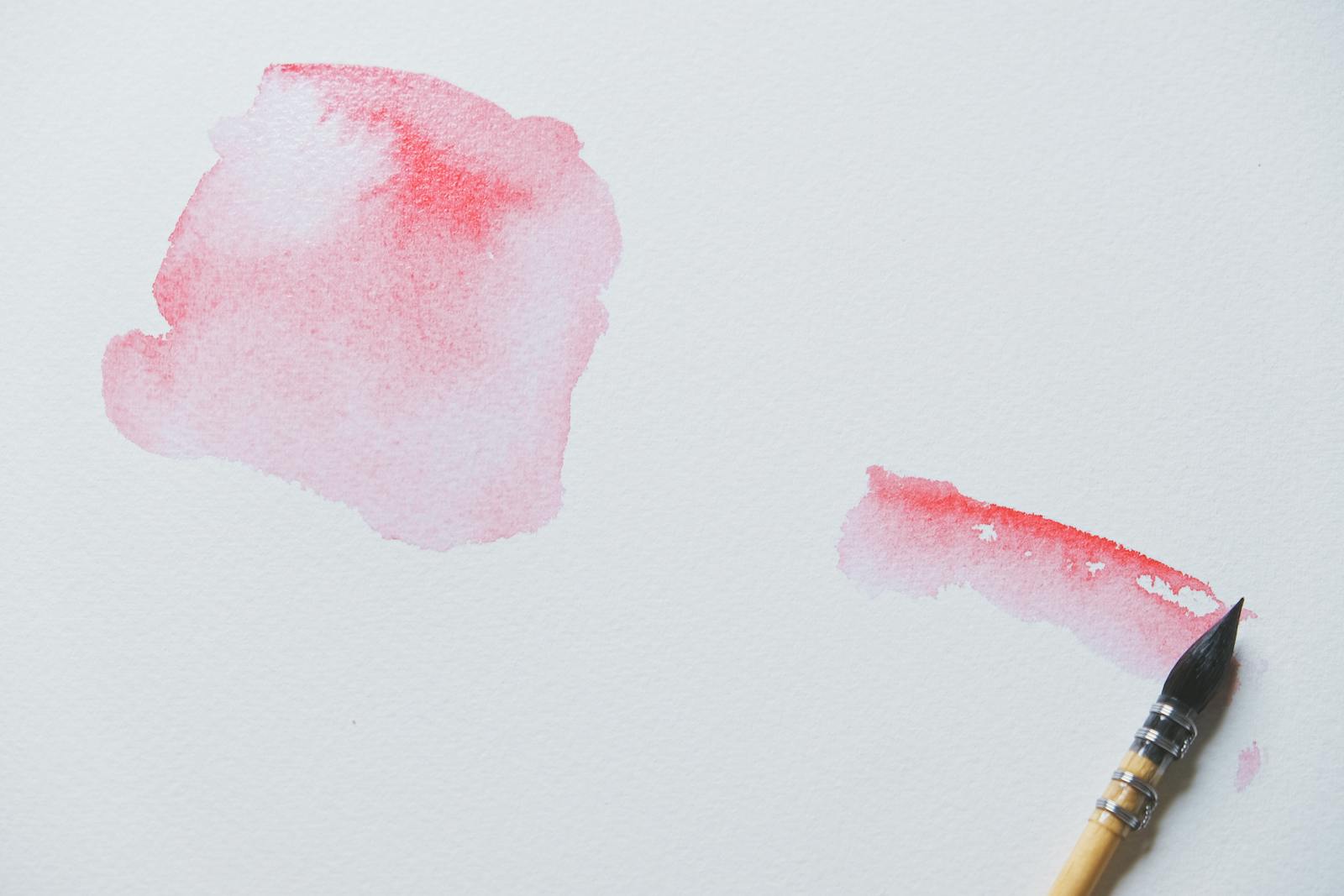Masking fluid, also known as liquid frisket, is a versatile and essential tool for artists, particularly those working with watercolors. It allows artists to preserve specific areas of their paper by preventing paint from adhering to those sections, thus creating highlights, white spaces, or fine details. When used correctly, masking fluid can add a whole new level of precision and control to your artwork. However, it can be tricky to use effectively, and understanding the right techniques and practices is crucial to achieving the best results.
This in-depth guide will cover everything you need to know about using masking fluid, from its fundamental properties to advanced techniques. Whether you’re a beginner or an experienced artist looking to refine your skills, this article will help you master the art of masking fluid to enhance your painting process and create more dynamic and controlled works of art.
What is Masking Fluid?
Masking fluid is a liquid medium made primarily from latex that dries into a rubbery film. Its main purpose is to mask off areas of your paper, preventing watercolors or other paints from adhering to those parts. Once the painting is complete, the dried masking fluid can be peeled away, revealing the untouched surface beneath. This is particularly useful for preserving highlights, complex shapes, or delicate details in your artwork.
Masking fluid is especially important in watercolor painting, a medium where controlling white spaces and light areas can be challenging due to the transparency and fluidity of the paint. In other forms of painting, such as acrylic or gouache, artists can add white or lighter colors on top of darker layers. However, in watercolor, the white of the paper serves as the highlight or lightest value, making it essential to protect those areas in advance.
Key Characteristics of Masking Fluid
- Latex-Based: The latex content in masking fluid allows it to dry into a flexible film that can be peeled off easily once your painting is finished.
- Fast-Drying: Masking fluid dries quickly, usually within 5 to 10 minutes, depending on the thickness of application and environmental conditions.
- Removable: Once dry, it can be removed by rubbing it off gently, typically with your fingers, a rubber cement eraser, or a masking fluid pick-up.
- Waterproof: Masking fluid resists water, allowing you to apply watercolor or other wet media over it without affecting the masked areas.
- Can Stain or Damage Paper: If left on the paper for too long or applied incorrectly, masking fluid can sometimes stain or tear the paper during removal. Learning how to use it properly is key to avoiding damage to your artwork.
Common Types of Masking Fluid
There are different types of masking fluid available, and understanding the differences will help you choose the best option for your specific project. Here are the most common varieties:
- Standard Masking Fluid: This is the most commonly used type and is typically clear or slightly yellowish in color. It dries quickly and is ideal for blocking off larger areas or preserving intricate shapes.
- Colored Masking Fluid: This type of masking fluid is tinted, usually in light shades of blue or yellow, making it easier to see where you’ve applied it on white paper. The colored version is particularly helpful for artists working with detailed compositions.
- Permanent Masking Fluid: Unlike standard masking fluid, this type is non-removable once it dries. It’s used more often in mixed-media art or for permanent blocking in paintings, but it’s not typically used in watercolor painting where removal is needed.
- Fine Line Masking Pens: These come in pen form and are excellent for applying masking fluid with precision. They are great for fine lines, delicate details, and lettering.
- Non-Latex Masking Fluid: For artists with allergies or sensitivities to latex, there are non-latex versions available that work similarly to the traditional latex-based fluids.
Why Use Masking Fluid in Watercolor Painting?
Masking fluid is a game-changer for watercolor artists who want to preserve areas of their paper while working on washes or detailed layers. The benefits of using masking fluid include:
- Preserving White Spaces: In watercolor painting, the white of the paper often serves as the highlight or lightest area of the painting. Masking fluid allows you to preserve these areas without worrying about accidentally covering them with paint.
- Protecting Intricate Details: Fine details, such as hair, tree branches, or textured surfaces, can be difficult to paint around in watercolors. Masking fluid makes it easy to block off these areas while applying broader washes.
- Creating Textural Effects: By applying masking fluid in different ways—using sponges, toothbrushes, or fine-tipped applicators—you can create interesting textures and effects that add depth and dimension to your work.
- Enabling Layered Washes: Masking fluid allows you to build up layers of color without worrying about losing the crispness of previously painted sections. You can mask off areas, paint around them, and then remove the fluid to reveal the preserved paper or color underneath.
Preparing to Use Masking Fluid
Before diving into applying masking fluid to your artwork, it’s essential to take certain steps to ensure that you achieve the best results without damaging your materials. Proper preparation is key to a smooth and effective process.
Materials You Will Need:
- Masking fluid (your preferred type, such as standard or colored)
- Brushes (preferably old or inexpensive brushes, as masking fluid can damage them)
- Toothpicks, sponges, or applicators (for more intricate applications)
- Watercolor paper or any other suitable surface
- Dishwashing liquid or soap (to protect your brushes)
- Rubber cement pick-up or eraser (for removing dried masking fluid)
- A palette knife or stylus (for detailed lines or scraping techniques)
Step 1: Protect Your Brushes
Masking fluid can be tough on brushes, causing the bristles to stiffen or become unusable if not cleaned properly. Therefore, it’s important to use older brushes or inexpensive ones that you won’t mind dedicating solely to masking fluid applications. To further protect your brush, dip it into soapy water or lightly coat the bristles with dishwashing liquid before dipping into the masking fluid. This protective barrier helps prevent the fluid from clinging too strongly to the bristles and makes it easier to clean afterward.
Alternatively, some artists prefer using disposable applicators, such as toothpicks, cotton swabs, or sponges, for applying masking fluid. These tools can be especially useful when creating textures or detailed effects.
Step 2: Prepare the Paper
Before applying masking fluid, make sure your paper is completely dry. Applying masking fluid to wet or damp paper can lead to uneven application, smudging, or paper tearing during removal. It’s also important to ensure that the surface of the paper is clean and free from any oils or residue that could interfere with the masking fluid’s adhesion.
Step 3: Test on Scrap Paper
If you’re using masking fluid for the first time or experimenting with a new technique, it’s a good idea to test it on scrap paper before applying it to your final piece. This allows you to practice the application, understand how the masking fluid behaves on your paper, and experiment with removal techniques without risking your finished artwork.
How to Apply Masking Fluid
Once your materials are prepared, you’re ready to start applying the masking fluid. The key to using masking fluid effectively is to apply it carefully and precisely, as it dries quickly and can sometimes be difficult to control if you’re not familiar with it.
Step 1: Dip the Brush or Applicator
Dip your brush (or chosen applicator) lightly into the masking fluid, ensuring that the bristles or tip are evenly coated but not overloaded with fluid. If you’re using a fine-tipped applicator or toothpick, you can control the amount more easily for detailed work.
Step 2: Apply the Masking Fluid
Apply the masking fluid to the areas of your paper that you want to preserve. This could be large areas of white space, intricate lines, or detailed highlights. Use smooth, even strokes to ensure a consistent application. Avoid building up the masking fluid too thickly, as this can make removal difficult and may damage the paper.
For textured effects, consider using different tools:
- A sponge or toothbrush can be used to flick or dab masking fluid onto the paper, creating a splattered or speckled effect.
- A toothpick or fine-tipped pen can be used for thin lines and precise details.
If you are working on complex shapes, start with the outer edges and work inward, carefully defining the borders of the area you want to mask.
Step 3: Let the Masking Fluid Dry Completely
Once the masking fluid has been applied, it is essential to let it dry completely before you begin painting. The drying time will vary depending on the thickness of the application and the humidity levels in your workspace, but in general, it should take about 5 to 10 minutes for a thin layer to dry. If you’re working in a humid environment or applying a thick coat, allow more time for drying.
It’s important not to rush this step, as painting over wet masking fluid can
cause the paint to mix with the fluid, leading to smudging and unwanted results.
Step 4: Begin Painting
Once the masking fluid is dry, you can begin painting your artwork as usual. Apply your watercolor washes or layers confidently, knowing that the masked areas will remain protected. You can paint directly over the masked sections without worrying about the color bleeding into the preserved areas.
Feel free to experiment with wet-on-wet or wet-on-dry techniques, and build up layers of color around the masked sections. The masking fluid will hold its ground until you’re ready to remove it.
Step 5: Removing the Masking Fluid
Once you have finished painting and the paint has dried completely, it’s time to remove the masking fluid. Gently rub the masked areas with your fingers, a rubber cement pick-up, or a clean eraser. The masking fluid should peel away easily, revealing the untouched paper underneath.
Take care to remove the masking fluid gently to avoid tearing the paper or disturbing the surrounding paint. If the fluid resists removal or has been left on the paper for too long, it may cause damage, so be mindful of how long the fluid has been in place.
Advanced Masking Fluid Techniques
Once you’ve mastered the basics of applying and removing masking fluid, you can begin experimenting with more advanced techniques to achieve specific effects in your artwork. Here are some ideas to take your masking fluid usage to the next level:
1. Layered Masking
For more complex paintings, you can apply masking fluid in layers to protect different areas of the painting at different stages. For example, you might apply masking fluid to preserve highlighted areas in the background, then remove it and apply another layer to protect mid-ground details while you work on the foreground. This allows you to create depth and texture by building up layers of color while preserving certain elements.
2. Splattering for Texture
Using an old toothbrush or stiff brush, you can splatter masking fluid onto the paper to create a textured effect that mimics snow, rain, or sand. After the paint has dried and you remove the fluid, the small white dots will add dimension and interest to your piece. This technique is particularly useful for landscapes or abstract works where texture plays an important role.
3. Fine Line Work
If you’re working on detailed linework, such as creating hair, feathers, or tree branches, a fine-line masking fluid pen or applicator can give you the control you need. Using a ruling pen or quill pen dipped in masking fluid can also produce clean, crisp lines.
4. Dry Brush and Masking Fluid Combination
For a more textural effect, try combining masking fluid with a dry brush technique. Apply the masking fluid in broad strokes using a dry brush, and once it’s dry, paint over the masked areas. When you remove the fluid, the preserved areas will have a rough, textured look, adding variety to your painting.
5. Creating Gradients Around Masked Areas
By applying masking fluid to preserve an area of white paper, you can later paint gradients or washes around the masked shape, creating smooth transitions from dark to light or from one color to another. This technique is useful for adding contrast and making certain areas of the painting pop.
Common Mistakes to Avoid When Using Masking Fluid
Masking fluid can be tricky to work with if you’re unfamiliar with its properties. Here are some common mistakes to avoid to ensure a smooth process and excellent results:
1. Applying Masking Fluid to Wet Paper
Always ensure your paper is completely dry before applying masking fluid. Applying it to damp or wet paper can cause it to soak into the fibers, making it difficult to remove and potentially damaging the paper.
2. Using Your Best Brushes
As mentioned earlier, masking fluid can ruin brushes if not handled properly. Always use old or inexpensive brushes specifically for masking fluid, and protect them with soap before application.
3. Leaving Masking Fluid On for Too Long
Leaving masking fluid on the paper for extended periods can cause it to bond with the paper, making removal difficult and potentially damaging the surface. Try to remove the fluid within 24 hours of application to avoid these issues.
4. Applying Masking Fluid Too Thickly
Thick layers of masking fluid can take much longer to dry and may be difficult to remove cleanly. Always aim for thin, even layers for best results.
5. Scrubbing Too Hard During Removal
When removing masking fluid, avoid scrubbing too aggressively, as this can tear the paper or disturb the surrounding paint. Use gentle rubbing motions to lift the fluid without damaging the artwork.
Cleaning and Storing Masking Fluid
Proper cleaning and storage practices will extend the life of your materials and keep your masking fluid in good condition. After using masking fluid, be sure to clean your brushes and tools immediately with warm, soapy water. If masking fluid dries on the brush, it can be extremely difficult to remove.
When storing masking fluid, always keep the bottle tightly closed to prevent it from drying out or thickening. Store it in a cool, dry place to ensure its longevity.
Conclusion
Mastering the use of masking fluid can significantly enhance your watercolor painting by allowing you to control white spaces, preserve intricate details, and experiment with layering techniques. Whether you’re preserving highlights, protecting complex shapes, or creating textures, masking fluid offers versatility and precision that can take your artwork to new heights.
By following the techniques and tips outlined in this guide, you can confidently incorporate masking fluid into your artistic practice, knowing that it will help you achieve cleaner, more controlled, and more dynamic results. With practice and experimentation, masking fluid will become a valuable tool in your creative toolkit, enabling you to create more detailed, layered, and striking works of art.




